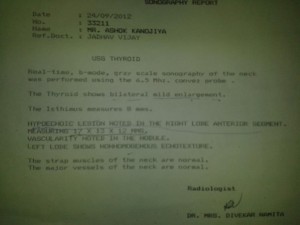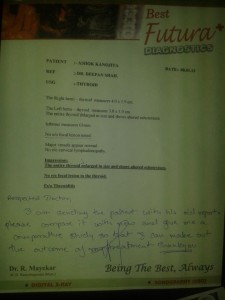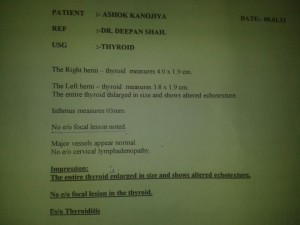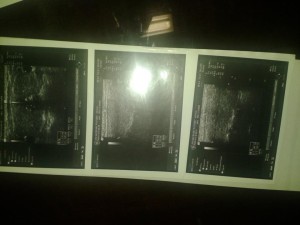Iron Defciency also called Sideropaenia or Hypoferremia means lack of supply of sufficient quantity of iron required for various eventual physiological needs of human bady, it is one of the most common form of nutritional deficiency.
It is more common in females compared to males. More than 50% of Indian women suffer from iron deficiency. Severe form of iron deficiencies also causes deaths not only in under-developed countries(350 per million) but also in developed countries like USA(8 per million). Its prevalence in European nations is surprisingly low.
On an average there is 4-5 gms of total iron in human body of which approximately 2.5gms is in RBC and almost 2 gms in bone-marrow liver and spleen. Where liver is primary physiologic source of iron reserves in body. Around 3-4 mg of iron in body circulates through plasma which is bound to transferrin as free iron is toxic to body. Also Reticulo-Endothelial system hoards and recycles iron from ageing RBC, macrophages store iron from engulfed RBC and is stored in form of hemosiderin they create in times of excessive RBC destruction and increased requirement of iron which gradually they reabsorb and destroy one requirement is normalised.
Within cells iron that been designated for cellular processes is stored in myoglobin and in cytochromes for energy producing redox reactions these type of designated iron amount is around 400gm in whole body.
Iron deficiency first relfects in iron reserves, reduced reserves usually doesent show any symptoms initially in most of the cases. As more than 60% of iron is in form of heamoglobin within RBC the very first sign iron deficiency will be seen as anaemia, this type of anaemia is called iron deficiency anaemia. and its usually its found that people with iron deficiency die of organ failure due to lack of oxygen carrying capacity of RBC that will be well before cells runs out of iron for intracellular processes like electron transport.
For production of new RBC humans use 20mg of iron/day most of which is salvaged and recycled from old RBC
Basic Role of Iron in Human Body
- Iron is Present in all the cells.
- Especially in Red Blood Cell where its a key component of Heamoglobin molecule.
- Required for transportation of Oxygen from lungs to all tissues and its cells.
- In the form of Cytochromes it helps electron transfer within the cells.
- Facilitating Oxygen Enzyme Reaction in various tissues
Iron Absorption
Iron is absorbed in form of Heme protein or in Ferrous Fe²+ form in duodenum by special molecules present in entrocytes of duodenal lining.
Fe³+ is first converted to Fe²+ with the help of 2 enzymes:
- Ferric Reductase Enzyme present on erythrocyte brushed border and
- Duodenal Cytochrome B(Dcytb)
Then Divalent Metal Transporter 1(DMT1) transports this extracellular iron through the cell’s plasma membrane into the Entrocyte.
Its then either stored in enterocytes as ferritin or cell can release it into body by transfering it through basolateral end of enterocytes of small intestine with help of only known iron exporter in mamals called Ferroportin with help of a Ferroxidase called Hephaestin that converts Fe²+ to Fe³+.
Hepcidin is a hormone that post-transitionally inhibits ferroportin which acts as negative feedback in iron level balance
Body uses all these factor to increase or decrease the iron level in body by increasing or decreasing the production of these enzymes and hormone.
Rate of Absorption of Iron is dependent on following factors
- Total Iron stores
- Rate of RBC production by Bone Marrow
- Concentration of Heamoglobin in RBC
- Oxygen Content of Blood
- any chronic inflamatory process or infection in body reduces iron absorption to deprive bacteria from iron
- Hepcidin level
Absorption of iron if taken orally from dietary source or in form of salts as in suppliments is significantly low and also its highly variable, Body can absorb only 5-35% of total ingested dietary iron and it depends on type of iron source and other circumstances. Best absorbed form of iron in which it get absorbed by 20-15% is heme iron and it usually comes in animal products and in few plant products, most of the iron from digested food or suppliment is absorbed in body from deudenum a part of small intestine.
Human Body steadily lose iron on daily basis through stools, sweating, shedding dead cells of skin and intestinal mucosa, minor blood from intestinal linning , in females menstrual bleeding etc. on an average normal physiologic loss of iron in male is 1 mg/day and in females it is 1.5-2mg/day who has regular menstrual function and regular healthy physiology.
Recommended Dietary Allowances for Iron
| Age | Male | Female | Pregnancy | Lactation |
| 0-6months | 0.27mg | 0.27mg | | |
| 7-12 months | 11mg | 11mg | | |
| 1-3 years | 7mg | 7mg | | |
| 4-8 years | 10mg | 10mg | | |
| 9-13 years | 8mg | 8mg | 27mg | 10mg |
| 14-18 years | 11mg | 15mg | 27mg | 9mg |
| 19-50years | 8mg | 18mg | | |
| 50 years above | 8mg | 8mg | | |
Causes of Iron Deficiency
Blood loss due to
- Excessive menstrual bleeding
- Bleeding through ulcers benign and malignant tumours heamorrhoids.
Insufficient dietary intake of iron compared to physiological needs as mentioned in RDA table above
Improper absorption of iron due to
- Vitamin B12 or Vit C or co-enzyme deficiencies
- Intestinal disease
- In patients who have surgically removed part of stomach or intestine.
- Excess of Calcium Zinc and Manganese
Iron Deficiency Symptoms
- Pallor – patient look pale and anaemic
- Weakness
- Dullness
- Dizziness
- Irritable
- Lethargic
- Tiredness
- Frequent headaches
- Breathlessness – dyspnoea on exertion
- Lack of concerntration
- Child’s growth slows down and milestones walking talking dentition etc delayed mental and behavioral problems.
Diagnosis of iron deficiency
Iron deficinecy will result into reduction in following parameters on blood test:
- Red blood cells quantity, size and colour
- Heamoglobin level
- Hematocrit
- Ferritin
- Serrum iron
- Transferrin
Additional test may be required to rule out other causative factors like USG, endoscopy, to rule out bleeding tumours or ulcers, hormonal essay for women with menorrhagia, etc.
Dietary Sources of Iron
Nonvegetarian has best source of iron especially in
- Red meat
- Shell fish
- Liver
- Egg yolk
- Turkey
Vegetarian sources rich in iron
- Spinach
- Brocolli
- Peas
- Chick Peas
- Beans
- Lentils
- Tofu
- Amla
- Quinoa
- Almond
- Cashewnuts
- Flax seeds
- Sesame seeds
Iron requires Vitamin C and Vit B12 for its absorption. Amla and Spinach have blend of both iron and vitamin C, so they are regarded as good source of iron since ages in ayurveda.
When iron deficiency is chronic and severe pt may require oral or injectable iron suppliments and in cases with severe iron deficiency anaemia blood transfussion or RBC transfussion may be required.
Homoeopathic Medicines for Iron Deficiency
- Cinchonna Officinalis
- Ferrum Metallicum
- Ferrum Phos
- Bio Combination No1
Any underlying causes needs to be ruled out and treated, especially menorrhagia in females.
MENORRHAGIA




